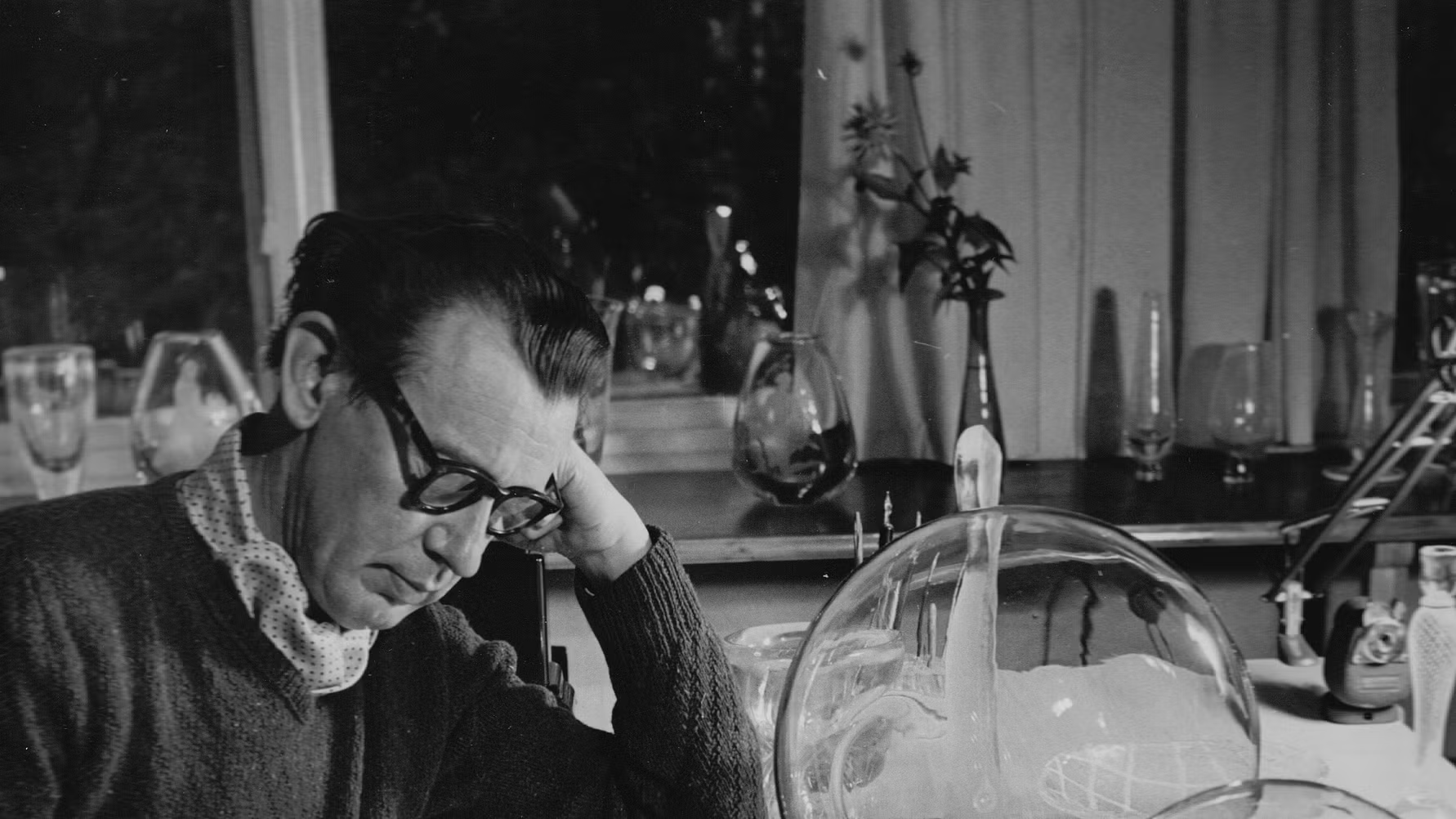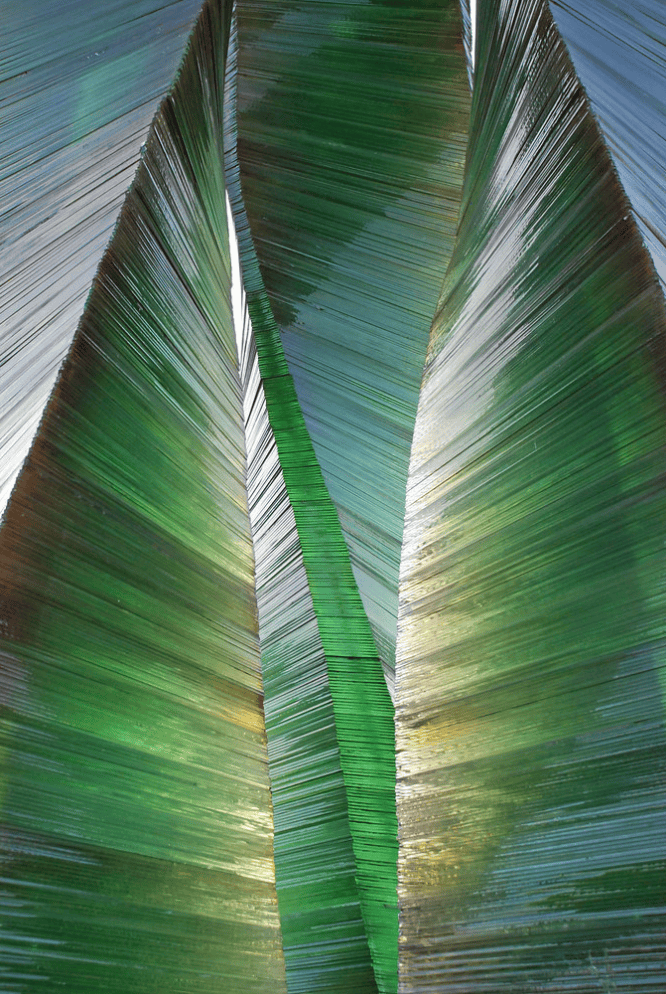
Vicke Lindstrand
Vicke Lindstrand (27 November 1904 – 7 May 1983) was a Swedish multidisciplinary artist, best known as one of the pioneering figures in glass art. Born in Gothenburg, he originally trained as a commercial illustrator and worked in advertising and drawing before joining Orrefors glassworks in 1928.
From 1928 to 1940, Lindstrand worked at Orrefors under the luminaries Simon Gate and Edward Hald. He debuted at the Stockholm Exhibition in 1930, presenting twelve enamel‑decorated glass vases with exotic, stylized motifs. This work attracted wide attention from international design publications.
Lindstrand developed several innovative glass techniques. He revitalised “graal” into a form known as “mykene” and, together with Edvin Öhrström (and Knut Bergqvist), invented the now famous “ariel” technique involving suspended air bubbles within the crystal. He also created bold engraved pieces such as the “Pearl Fisher” and “Shark Hunter” vases, characterized by muscular figurative decoration.
During the 1930s he exhibited at major events including the 1937 Paris World’s Fair and the 1939 New York World’s Fair. A monumental three‑metre glass fountain he created for New York in 1939 showcased his ambition in scale and artistry.
Unable to continue in glass during the war era, he transitioned to ceramics and became artistic director at Uppsala‑Ekeby from 1942 to 1950. There he produced sculptural stoneware, vases, pottery and figural ceramics bringing his graphic sensibility into clay.
In 1950 Lindstrand was appointed artistic director at Kosta glassworks (later Kosta Boda) and remained in that role until 1972 or 1973. At Kosta he introduced vibrant, colorful designs and experimented with new forms and techniques. Notable series included Autumn (“Hösten”), Trees in the Fog, and various Sommerso pieces. He influenced building design too, working with Bruno Mathsson on Kosta’s exhibition hall and worker housing.
Lindstrand also created monumental outdoor glass sculptures. His major public works include
• Ikaros Nadel in Stuttgart (1964, 9 m tall),
• Prisma in Norrköping (1967, 11.5 m tall),
• Grön eld in Umeå (1970, 9 m tall) which was the tallest glass sculpture in the world at inauguration. (detail picture to the right).
He finished his career working as a freelance artist at Studio Glashyttan in Åhus from 1977 until his death in 1983.
Lindstrand's work received international acclaim and awards from world exhibitions. His designs were acquired by major institutions such as the Museum of Modern Art in New York, the Victoria and Albert Museum in London, the Swedish Nationalmuseum and others.
Though he did not receive singular prizes like a Lunning or Prince Eugen Medal, Lindstrand's exhibition history—from Stockholm 1930 to New York 1939 to Paris 1937—along with his innovations in glass technique and monumental public sculpture, mark him as a towering figure in Swedish and global design history.


Vicke Lindstrand vases
(2 PCS)
Vicke Lindstrand vase

Vicke Lindstrand table lamp

Vicke Lindstrand vase

Vicke Lindstrand vase

Vicke Lindstrand vase

Vicke Lindstrand vase

Vicke Lindstrand vase

Vicke Lindstrand vase
